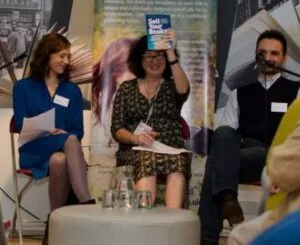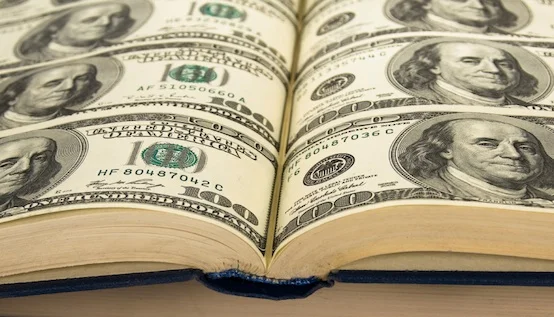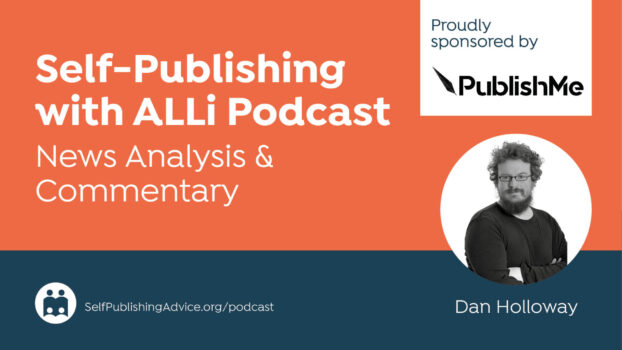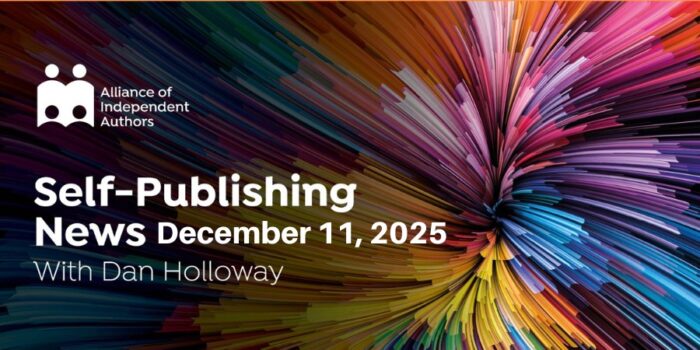
Debbie Young, shamelessly selling her own books at a SilverWood event in Foyles
How much should indie authors charge for their self-published books? Well, the glib answer is: “You're an indie – it's up to you!” But before you decide, there are lots of questions you should ask yourself, to make sure you're neither selling yourself short not pricing yourself out of the market. Some of these questions are listed below.
- What is my book worth? By this, I don't mean work out how many hours it's taken you to write it and what you need to charge to recoup your investment of time (you probably don't want to know the answer!) But work out its real market value. What do similar books sell for in your genre? Allow for page count, size and production qualities – and don't price your book against the going rate, especially if you're starting out with no real following. Bestselling, household name authors may be able to get away with a premium rate, but that's because they're them, not you. (But keep going, and maybe one day that'll be you…)
- What is my financial goal? Do you need to make a profit or will break-even do? Are you so keen to get your book out there – and sufficiently affluent – to make a loss, perhaps justifying that decision my treating your book as a loss-leader. NB This is not an admission of failure or weakness. In fact, it's a popular strategy for first books in a series: pricing the first one low or making it permafree to get readers hooked, before they go on to buy the rest of the series at full price.
- How will I sell it? Make sure you've allowed for ALL your costs of sales. With print on demand books sold via Amazon, your out-of-pocket expenses are only your basic set-up costs (design, editing, proofreading, etc), but if you're planning to distribute via bookstores, you'll need to factor in the bookseller's margins (typically 40% – remember, this mark-up reflects their need to make a profit to keep their book open, not their greed nor their exploitation of authors!) If you're selling directly from your website, postage and packaging, plus your time to despatch the parcels, which may include fuel and parking to reach the post office, can be significant expenses, especially if your books are heavy.
- Should I print the price on my book cover? It certainly adds the professional touch to print the price, but only do this if you are sure you have got it right, otherwise a change of heart later will mean a change of cover, and all the hassle and cost that entails. If your book is made available via distributors such as Ingram Spark, and the bookseller is using a barcode reader when ringing up a sale, he'll know the cost – but the reader, browsing in the shop and deciding whether to buy, won't know, and will almost certainly want to. This means either you or the bookseller will have to add a sticky price label. Most bookstores will be willing to do that.
- Can a retailer sell my book at any other price than the one I set? It depends where you live and how you distribute your books. Some countries by law forbid the sale of books at below the publisher's specified price. In other countries, freedom of pricing is allowed. In the UK, where I'm based, there used to be what was called the Net Book Agreement, guarding against price cuts, but this was abolished many years ago, as it was perceived to be an unfairly restrictive practice, and opened up competitive pricing – unfortunately favouring the big traders, at the expense of the little ones. Amazon will also vary the price of your print books without any notice, for a short time, if it thinks it'll make more money that way. But don't worry if you see this happening to your books – you'll still get paid the same rate as before. Just spread the word of the price cut while it lasts, to take advantage!
OVER TO YOU Please feel free to add any I've missed in the comments – or indeed to answer them with what has worked for you.
RELATED POSTS
- How and Why to Make a Book Permafree – by Clare Flynn
- 12 Top Tips on Setting Ebook Prices – by Debbie Young





[…] almost ready to hit publish, but there’s just one more step before you can do that: price your book. This is not a “set it and forget it” process. You’re going to select a list price, but then […]
[…] Publishing: 5 Questions to Ask Yourself When Pricing Your Self-published Books by Debbie Young […]
It must depend on whether you want to cover your costs, make a profit or undercut similar books.
I priced my first book to match similar ones (£ 7.99p), the next four at two or three pounds less, to sell to people who could get the same type of book for 50p from a charity shop and the last one to break even.( If I sell all the copies I have had printed)
The most expensive book sold the most copies.Whether this was marketing or the fact that it was the best story, I don’t know – but there’s a lesson there somewhere.
[…] How to price your self published books. […]
[…] For Indie writers: in Part Three of “What’s Your Reader Retention Plan?” Jami Gold explains how to use redirects to ensure your links never get broken; Joel Friedlander explores the new Amazon Success Toolkit, an all-in-one-place reference for how to use all of Amazon’s tools successfully as an indie author; and Debbie Young proposes 5 questions to ask yourself when pricing your self-published books. […]
[…] you are just starting with self-publishing you definitively want to answer 5 questions when pricing your books (don’t forget the […]
You made a very good point with #1. I liked all your points, but the first really struck home for me as I’ve been debating this price issue. You’re right. Similar books in a genre matters a lot when coming up with a good price.
That first point is too easy to get wrong, Ruth – it takes courage to forget the time it took to write a book and price it for the market instead, but it’s definitely the best way to go!
I shared this to my Writing Tips on Google+ with the comment:
The first time I’ve seen “cover your beer tab” as a factor in pricing your book. (“Make sure you’ve allowed for ALL your costs of ales.”) But really, typo aside, this is a succinct list of 5 steps to decide price for an indie-published book.
Thanks for the list! It does help…
Haha! Thanks, Pat, I’ll fix that typo now! Glad you found it helpful apart from that!
A common theme I hear from indie writers when asked why their book is priced at $9.99 is “I spent three years writing and editing it. It is worth the time I put into it.”
Frankly, no, it isn’t. How much time you spent and all that sweat equity is completely irrelevant. The book is “worth” what the public will pay for it, pure and simple.
With manufactured goods, you can price out. That means, you tally up all the costs, add a margin, and there you are. With indie publishers, most of those costs are sunk costs. They are over and done with, and whether you sell a million books or none, those costs will not change. So what you have to do is price in. That means start high, then start lowering the price until you can maximize sales and margin. That does not always mean the most sales if you have a profit motive. With Amazon, selling a novel for $1.99 might get you a few more sales than if you price it at $2.99, but your’d have to sell three books at $1.99 to earn the same amount as one book at $2.99.
When taking into account advertising and marketing costs, you need to be careful. You can’t willy-nilly decide that since the marketing costs $400, you need to raise the price to whatever to cover the cost. Raising the price may very well cost you sales, thereby lowering your overall revenue. Marketing should be initiated only after you perform a cost-benefit analysis. “If I spend $400, my sales will increase by 250 copies. At $2.99 per book, I will earn an extra $523.” I think it would be foolhardy to think that if the same marketing will only increase sales by 100, that you should increase the book price to $5.49 to cover the cost of the book. It’s better just to keep your marketing money in your pocket and keep the original price.
Of course, you don’t know for sure how marketing will affect sales, and that is why you try it out. But don’t raise the price simply for the marketing. Try it at your normal price and see what happens.
Thanks, Jonathan, really interesting and helpful observations you’ve added there.
Thanks for the great tips on pricing!
I keep my paper book prices in a separate .png files. When I need to change a price, I only have to update that price file, and then that file can easily be combined with the cover image. That makes the price much easier to change (and I don’t have to worry about accidentally changing the cover image.) You still have to pay to update the cover at IngramSpark, but it’s free at CreateSpace.
One other tip that bit me in the butt: Audiobook pricing at Audible does not follow these rules. If the publisher chooses to go exclusive (and make 40% instead of 25% royalties), then Audible controls the price, and the publisher gets paid a percentage of the NET SALE. (So when your audiobook is on sale at Amazon for $1.99, you get paid 80 cents rather than 40% of the list price.)
Thanks for such a great blog!
Thanks for the heads up on audiobooks. I didn’t know that one.
You’re welcome, DL! And thanks adding that very useful info on audiobook pricing.